#orissa colleges
Photo
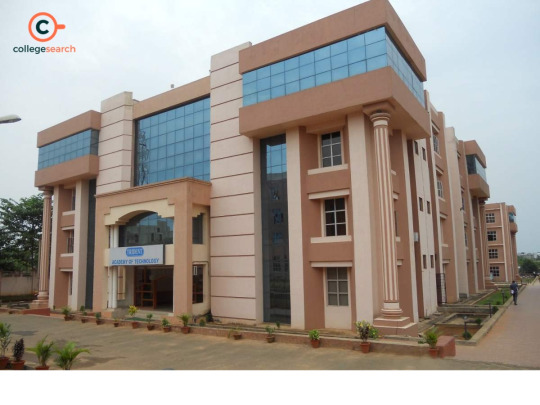
Trident Academy Of Technology, Bhubaneswar
0 notes
Text
02-02-23
০২-০২-২৩
My first semester is finally over. It's been a terrific four months at KIIT-DU, Bhubaneswar. I've enjoyed every bit of my newfound college life. Not saying I didn't have my lonely sad-sad days but the happy days probably outweigh them.
I'm 18 now, the first birthday I spent without my parents. This is probably the longest I've been away from my family. I've been through so many new experiences and probably developed as a person too. My social skills have improved. I mean, I can finally go buy a lassi for myself at the foodcourt :) and not forget to take the change back :))) Although UPI helps. Oh yes, I finally know how to use UPI! HEHEHE
I also, finally FINALLY have a stable romantic relationship. Almost five months with my present girlfriend and I want her for lifeeee. My previous romantic ventures weren't so successful as you guys know. I have also been able to move on from my last crush, all thanks to SJ.
I also made some wonderful friends here at KIIT. Funny thing is, I don't know half my own classmates but the class knows me. People I've never talked to are like, "Hey Agni, iska answer bata na" (Hey Agni, what's the answer for this?). And this sudden rise in popularity (I was a fcking loner back in school) is probably because that maths professor made me recite poems in front of the class.

As far as my academics go... Well, I fcked up my exams. But I HOPEEEE I'll get 70% up?! Pray for me guys ;_;
I mean, I never wanted to join an engineering college in the first place. Yes, I enjoy coding but not the other shit they're teaching here. The new education policy makes us study physics, chemistry, evs, yoga and stuff we'll never require in our professional lives.
Anyways, the campus is being lit up for the Karnival and freshers and it looks beauuuutiful! I mean, it's private college. They needed to use the money extorted from the students somewhere or the other.

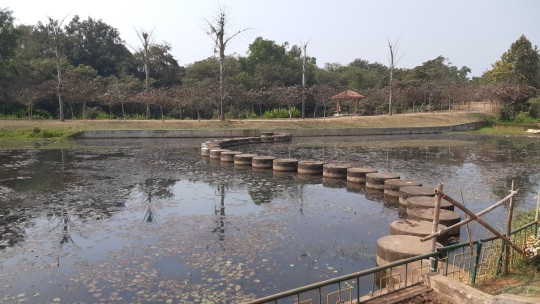
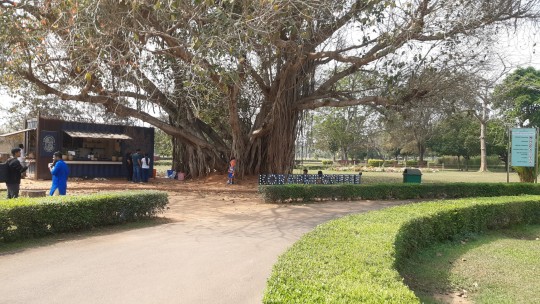
I also visited lots of cool places around here. Sure, Bhubaneswar ain't Kolkata or Mumbai but it sure has some places to see. Like, Shanti Stupa, Nandankanan zoo, Lingaraj, etc etc I've never been outdoors so much 💀
Honestly, the botanical garden ain't much to look at. It might have some endangered species but these people haven't put up name tags for me to recognise. And the Koraput coffee place is overrated and overpriced. Go for it if you're coffee crazy tho... I'll stick to my cheap college cappuccinos, thank you very much.
Anyways, it's already become a second home to me. I do miss Nagaland a lot and Assam too... Brooooo I need to go see the tea gardens againnnn I'm STARVED to see the tea gardens ;;;
Anyways, that's it for now. I'll try to be more regular at posting these but... Well yk, I'm a very busy guy... Need to waste 18 hours a day, then sleep for an hour and attend classes :)
Aight, good day mates!
- normalweirdoboy
#normalweirdoboy#india#journal#teen#today#blog post#life#bengali#langblr#orissa#odisha#bhubaneswar#kiit#college life#travel#coffee#student
3 notes
·
View notes
Text
Today in Christian History

Today is Wednesday, August 23rd, 2023. It is the 235th day of the year (231st in leap years) in the Gregorian calendar; 130 days remain until the end of the year.
1712: Addison’s hymn “The Spacious Firmament on High” appears in the Spectator at the end of an essay on faith.
1723: Death of Increase Mather, one of America’s most famous eighteenth-century clergymen, a president of Harvard College, and the father of Cotton Mather. Mather had published many books, including Cases of Conscience Concerning Witchcraft which helped end executions for witchcraft in New England.
1828: Carl Gutzlaff and Jacob Tomlin become the first Protestant missionaries to set foot in Thailand.
1838: Death of Gideon Blackburn who had been a missionary to the Cherokee and an evangelist and church planter in other frontier states, including Tennessee. Blackburn Theological Seminary (later renamed Blackburn College) will be named in honor of him.
The first class graduates from Mt. Holyoke Seminary, the first American college for women, founded by the Christian educator Mary Lyon. (pictured above)
1888: Huang Su’e marries Episcopal missionary Francis Lister Hawks Pott, a leader and educator with the Chinese Anglican Church. Huang will evangelize, teach, and found an orphanage.
1901: Six hundred American teachers arrive in the Philippines to staff schools and begin mass education of Filipinos. With them comes Protestantism, which will eventually make up about 7% of the island nation’s population.
1918: Soviets execute Ephraim, the Orthodox bishop of Selenginsk. He had been a fiery preacher, beloved of his people, and had converted Mongols, Buryats, and Koreans to Christianity.
1952: Death in Catonsville, Maryland, of Russell Kelso Carter. A Methodist preacher, he had authored the hymn “Standing on the Promises.”
1928: Death in Catonsville, Maryland, of Russell Kelso Carter. A Methodist preacher, he had authored the hymn “Standing on the Promises.”
1952: Death of Frederick Kenyon, biblical archeologist and author of Our Bible and the Ancient Manuscripts. He had had a knack for making his findings intelligible to lay people.
1966: Communist Chinese Red Guards smash the windows of Moore Memorial Church, burn its books, burn its cross, and confine church leader Sun Yanli and his family in the building where they interrogate and whip them. Later, when they are released, the guards will shave Sun’s head and make him sweep and clean the church buildings.
2008: A rampage against Christians begins in Orissa State, India, following the assassination of a Hindu leader which is blamed on Christians. Hindu mobs will kill forty Christians and burn thousands of homes, hundreds of churches, and thirteen schools. They will also rape many Christian women and sell dozens into sexual slavery. Tens of thousands of Christians will flee from the violence.
18 notes
·
View notes
Text
Madhusudan Das
Madhusudan Das
Madhusudan Das (28 April 1848 – 4 February 1934) was an Indian lawyer and social reformer,
who founded Utkal Sammilani in 1903 to campaign for the unification of Odisha along with its..
social and industrial development. He was one of the prominent figure, helping in the creation
of Orissa Province (present-day Odisha, India), which was established on 1 April 1936. He was
also the first graduate and advocate of Orissa. He is also known as Kulabruddha (Grand Old Man),
MADHUSUDAN DAS ALL ODIA BOOK AVAILABLE
Madhu Babu, and Utkal Gouraba (Pride of Utkal). In Odisha, his birthday is celebrated as the
Lawyers' Day on 28 April.
Family-
Madhusudan Das was born 28 April 1848 at Satyabhamapur, 20 kilometres (12 mi) from Cuttack during
the Company rule in India in a Zamindari Karana family.His father was Choudhury Raghunath
Das and his mother, Parvati Devee. They had initially named him Gobindaballabh. He had two elder
sisters and a younger brother named Gopalballabh. Gopalballabh was a Magistrate at Bihar Province
and the father of Ramadevi Choudhury. He was converted to Christianity that caused him boycotted in
the village which he had to quit to erect a small house at the end of the village. The house was
known as ‘Madhukothi’ or ‘Balipokharikothi’, later on used as the state office of the Kasturba National
Memorial Trust, in a part of which was running the Anganabadi, Balbadi. Madhusudan had adopted two
Bengali girls; Sailabala Das and Sudhanshubala Hazra. Sailabala was an educationist who had been trained
in England, and in whose name the famous Sailabala Women's College of Cuttack was founded.Sailabala was
Bengali, and her parents had left her in the care of Madhusudan Das and his wife Soudamini Devi at
Calcutta. In 1864, he passed Matriculation from Cuttack and thereafter he was inclined to become a teacher
and began his career as a teacher at Balasore for three years. The year 1866 was the year of a acute famine
in Odisha, called the "Naanka Durviksha" When more than one lakh people died of hunger. This year he converted
himself to Christian and changed his name as Madhusudan Das from his earlier name of Gobinda Ballav Choudhury.
Political career--
Known as 'Madhu Babu' by the common people, he worked for the political, social and economical upliftment
of the people of Orissa and worked as a lawyer, journalist, legislator, politician and social reformer. He
founded Utkal Sammilani which brought a revolution in the social and industrial development of Orissa. He
was elected as a member of the legislative council of Bihar and Orissa Province and under the Diarchy scheme
of Government of India Act, 1919, he was appointed as Minister for Local Self-Government, Medical Public
Health, Public Works in 1921.
He was the first Odia to become a member of both the legislative council and the Central Legislative Assembly
of India. He founded Utkal Sammilani (Utkal Union Conference) which laid the foundation of Odia nationalism.
Utkal Sammilani spearheaded the demand for unification of Odia speaking areas under a single administration.
This led to the formations of state of Odisha on 1 April 1936. He was also the first Odia to travel to England.
He founded the Utkal Tannery in 1905, a factory producing shoes and other leather products. In 1897 he founded
the ODISHA Art Ware Works. With his support, the Tarakasi(filigree) work of silver ornaments achieved commendable
feet.
Contribution to literature--
As a writer and poet, patriotism was always at the forefront of his mind, and that was reflected in all of his
literary works. He penned a number of articles and poems in both English and Odia. Some of his important poems
are "Utkal Santan", "Jati Itihash" and "Jananira Ukti". He was also an influential speaker in Odia, Bengali and
English.
Last years--
He died on 4 February 1934 at the age of 85.
2 notes
·
View notes
Text
Netaji Subhash Chandra Bose Jayanti 2023 : Facts, Quotes, History, Images

If you want to know about Netaji Subhash Chandra Bose, then you have come to the right place, we will give you all the information about Netaji Subhash Chandra Bose and you will know a lot of things about Subhash Chandra Bose so let’s start.
bloggingforu Provides You knowledgeable and Informational content.
Netaji Subhas Chandra Bose biography
Netaji Subhash Chandra Bose was a prominent Indian nationalist leader, who was a pivotal participant in the Indian rebellion to fight British rule. Bose was born the 23rd of January of 1897 in Cuttack, Orissa, India.
Bose had a formal education at England where he was certified as an attorney. But, he was profoundly affected by his experience with the Indian nationalist movement, and decided to go back to India.
In the 20th century, Bose was elected a president in the Indian National Congress, but Bose did not agree with the non-violent methods that were employed by Mahatma Gandhi as well as the Congress management. Bose was repeatedly detained for his political actions However, Bose continued to fight to secure Indian independence.
The 1930s were the time when Netaji Subhash Chandra Bose created the Forward Bloc an organization within the Congress which was in favor of an aggressive approach to the fight for independence.
Bose also traveled to Europe and visited with politicians and sought out support for the Indian Independence movement. In World War II, Bose created his own Indian National Army (INA) with the backing from the Axis powers. He declared the establishment of the “Provisional Government of India Free”.
Bose’s INA was a part of those of the Japanese in the battle against British during the Burma campaign, but they were eventually defeated.
Bose was killed in an airplane crash in 1945 in mysterious circumstances. Netaji Subhasg Chandra Bose death is controversial, and the precise cause of death is not yet clear.
However, his legacy is honored in India and his name is honored as a hero of the fight for Indian freedom.
Why we celebrates Netaji Subhas Chandra Bose Jayanti ?
Netaji Subhas Chandra Bose Jayanti, also known as Subhas Chandra Bose Birthday, is celebrated on January 23rd every year in India, to commemorate the birthday of the leader. It is a day to remember and honor his contributions to the Indian independence movement and his role as a leader and a freedom fighter.
Netaji Subhash Chandra Bose is considered to be an famous individuals in Indian history. He was the one who encouraged many Indians to join the fight to be free of British rule. He is famous for his courage, leadership and selfless service to the nation.
He was the leader of an army called the Indian National Army (INA) to fight British troops. British and his motto “Give me blood and I’ll grant you freedom” encouraged many Indians to join the fight for freedom.
This day is a patriotic one. celebrations and celebrations are held throughout India to honor Bose and his contribution to the Indian freedom movement. The public is invited to visit his memorials and statues as well as pay tribute to him by placing wreaths and flowers on the statue of him.
Colleges and schools also have special events to teach students about the life of Bose and his contributions. The celebration of Netaji Subhas Chandra Bose Jayanti is a way to remember his sacrifices and contribution to India and motivates the new generation to work to build an improved India.
Subhash Chandra Bose Quotes
Here is the some famous Quotes Of Subhash Chandra Bose.
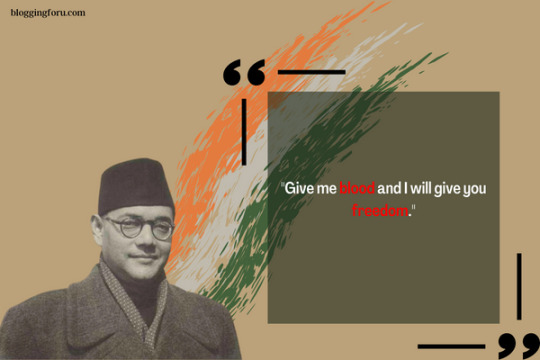
1. “Give me blood and I will give you freedom.”
2. “It is blood alone that can pay the price of freedom. Give me blood and I will give you freedom.”
3. “Freedom is not given, it is taken.”
4. “It is not the strength but the duration of great sentiments that makes great men.”
5. “The difference between what we do and what we are capable of doing would suffice to solve most of the world’s problems.”
6. “Life loses half its interest if there is no struggle — if there are no risks to be taken.”
7. We cannot sit still because we cannot, or do not, know the Absolute Truth.
8. “It is our duty to pay for our liberty with our own blood.”
9. “It is easy to kill individuals but you cannot kill the ideas.”
10. “Victory, however, has a hundred fathers and defeat is an orphan.”
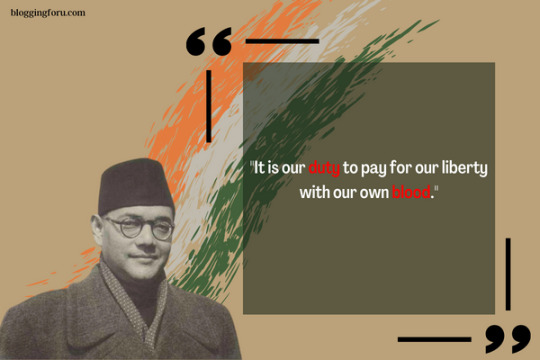
11. “One individual may die for an idea, but that idea will, after his death, incarnate itself in a thousand lives.”
12. “We have believed in the doctrine of love and non-violence for centuries. But where has it got us? Nowhere.”
13. “We have to fight against imperialism, against the political and economic systems that it imposes on the world.”
14. “The true source of rights is duty”.
15.”It is not the British soldier who is our enemy, it is the system for which he is fighting”.
#Netaji Subhash Chandra Bose#subhas chandra bose#subhash chandra bose#quotes#subhash chandra bose quotes#blog#blogger#bloggingforu#motivational quotes
4 notes
·
View notes
Text
From a Wasteland to a Temple of Learning

The Department of English at Ravenshaw University has a claim to be one of the oldest Post Graduate Departments in India. The department is set to observe its centenary celebrations.
I was a Post Graduate student of English (1982-84) during the diamond jubilee years of the department when the premier institution of Orissa was known as Ravenshaw College.
In fact, the college became a Post Graduate institution with the starting of M.A classes in English in 1922, a year after it was shifted to the present site.
In 1913, Nathan Committee of Patna University selected as site for the college a vast tract of wasteland – widely known as Chakrapadia where no one dared to walk alone after nightfall.
Yet, the British officers used it for horse racing and cricket matches, while women’s cycle races pulled more crowds.
On November 11, 1919, Lt Governor of Bihar & Orissa Sir Edward Gait laid the foundation stone to construct a complete set of new buildings. at a cost of Rs 10 lakh. The Maharaja of Mayurbhanj donated Rs One lakh for electrification of the new buildings and purchase of science laboratory equipment.
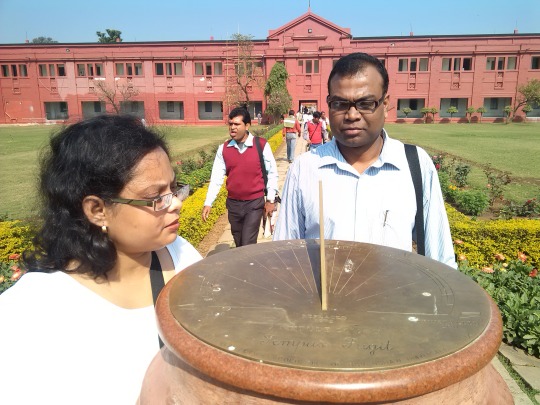
Architect A M Millwood came up with the design of the Ravenshaw college building. As part of the early buildings that came up then was the college main block (the Arts Block now) which included the large hall, three large class rooms (36 ft x 34 ft), thirteen class rooms (30 ft x 20 ft), twelve smaller tutorial class rooms in addition to senior and junior common rooms and administrative offices.
The science buildings consisted of three separate blocks, each including a lecture theatre and the necessary laboratories and located in the middle was a library known as Kanika library named in honour of Kanika Raja Rajendra Narayan Bhanjadeo who had donated Rs 55,000 for it. The buildings also included two Hindu hostels, one small Muslim hostel and a few residential quarters for the Principal and the Professors.
The opening ceremony of Ravenshaw College was held on April 5, 1922. The Governor of Bihar & Orissa declared it open after completing the proceedings of his Darbar with the Feudatory Chiefs in the College Hall. The Governor also opened the library and unveiled the portrait of Raja of Kanika.
When Ravenshaw College celebrated its diamond jubilee on January 18, 1936, the then Principal H R Batheja in his report observed: “We have at last a temple of learning, fair to look on, stately in proportions which compares not unfavourably with the only other template – The temple of Jaganath for which Orissa is known all over India. The twin monuments represent Orissa to the outside world and are a source of justice and pride to every Oriya”.

When the British occupied the Barabati Fort in 1803 there was no school or college in Odisha. Cuttack city had its first educational institution in 1822. Baptised as Cuttack School it was started by William Banptous and managed by the missionaries till it was taken over by the British government in 1841.
After upgrading it continued to be the only middle English school in the Orissa Division. It was named as Cuttack Zilla School when it was raised to the status of high school in 1851. It was converted into a Collegiate School in 1868, paving the way for establishment of a college in Cuttack.
Subsequently, the first college was born with the introduction of intermediate classes in the collegiate school in the same year. While in 1875 the school was named as Ravenshaw Collegiate School, its college wing was separated into a full-fledged government degree college in 1876 and named as Cuttack College affiliated to the University of Calcutta. In 1878 the Cuttack College was renamed as Ravenshaw College.
In the March 27, 2017 Bhubaneswar edition of The Telegraph a former Civil Servant wrote an article advocating a name change of the Ravenshaw University. An attempt was made to foist a debate over it. But there were no takers. I was then The Telegraph’s Principal Correspondent based in Cuttack. Understandably, no alumni would like to be robbed of the identity of being a ‘Ravenshawvian’.
Thomas Edward Ravenshaw was Divisional Commissioner at Cuttack from 1865 till 1878 when he retired and returned to England. Apart from being instrumental in introducing collegiate education Ravenshaw gave a memorandum to the authority for the establishment of the degree college.
But Lt. Governor of Bengal, Sir Richard Temple, agreed to the proposal on the condition that a contribution of Rs.10,000 was forthcoming from the public. The Maharaja of Mayurbhanj Krushna Chandra Bhanjadeo donated Rs 20,000 to fulfil the condition. It was on his insistence the name of Cuttack College was changed to Ravenshaw College in 1878.

The story of the Ravenshaw College with a campus sprawling over 87.4 acres has since been a classic tale – a sweeping story of Cuttack and of Orissa, that spans over one and a half century with its alumni virtually the Who’s Who of Orissa.
The Ravenshaw College Hall (now heritage hall) was the venue of declaration of Orissa as a separate province on April 1, 1936 where Sir John Austin Hubback was administered the oath of office of the Governor. On January 9, 1937, the first Provincial Durbar was also held in the College Hall.
The first historic Session of the Provincial Assembly was held in the Ravenshaw College Hall, Cuttack on July 28, 1937. The Assembly had altogether 10 sessions with 188 sitting days in all till it was dissolved on September 14, 1945. The election for the Second Provincial Assembly was held under limited franchise from April 4 to April 9, 1946. The newly elected members were administered oath on May 27, 1946 and the Assembly met for its First Session on the same day in the College Hall. Thereafter, it housed the State’s Legislative Assembly up to even after Independence till it was shifted to Bhubaneswar as the new capital.
The college originally was affiliated to Calcutta University and, thereafter to Patna University in 1917 and was finally affiliated to Utkal University in 1943. Utkal University began functioning from the college campus itself till its campus came up in Bhubaneswar in 1963.
Ravenshaw College observed its centenary in 1968. The Government of India honoured it through the issue of a commemorative stamp in 1978. It was then among the three educational institutions in the country to get the honour.
Ravenshaw University figured in the Lok Sabha debates on February 12, 2021 with Cuttack M.P Bhartruhari Mahtab highlighting the need to declare it as Central University by the Union Government.
Ravenshaw was granted autonomous status in 1989. It was given special status of unitary university by the Ravenshaw University Act, 2005. But it has lost this special status since the repealing of the act by the Odisha Universities (Amendment) Ordinance, 2020.
Today it has 27 undergraduate courses and 23 post graduate courses under nine schools having research facilities under PhD and DLit programmes. It has two centres for excellence – Centre for Environment & Public Health and Centre for Odishan Studies and four independent centres - Centre for Aurobindo Studies and Futurology, Centre for Translation and Digital Humanities, Centre for Women’s Studies and Centre for Bioinformatics and Computational Biology.
The University is set for expansion to a second campus spread over 124 acres at Naraj on the western outskirts.of the city.
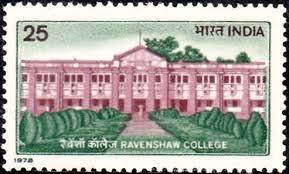
2 notes
·
View notes
Text
Best Engineering College for Placement
As a graduate seeking job placements at best engineering college in odisha, I know the importance of choosing the right institution. Let me walk you through why GEC stands out as one of the best engineering colleges for placement in Bhubaneswar, Odisha. Here, we delve into the factors that make GEC a premier destination for students aspiring for top-notch placements.
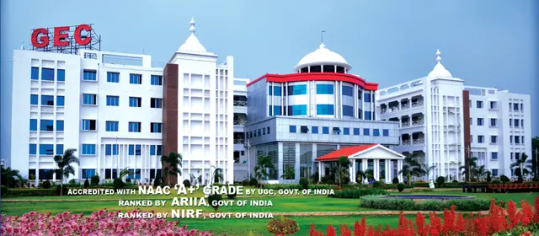
For more information about admissions and placements, visit GEC- Gandhi Engineering College.
Contact Information:
Contact No: 09776066555
Address: Gandhi Vihar, Badaraghunathpur, PO: Madanpur, Near Janla Bhubaneswar, Orissa-752054
Email: [email protected]
0 notes
Text




Laxmipriya Panigrahi (@laxmijpp) currently lives and works in New Delhi. She received a Bachelor of Visual Arts from Balasore Art and Crafts College, Orissa in 2013 and a Master of Visual Arts from Utkal University of Culture, Orissa in 2015. Over the years, she has participated in many art fairs and group exhibitions as well.
Being an artist, she is inspired by the folk art, traditional miniatures and pattachitra paintings of Orissa. She predominantly uses watercolours in her artwork. By fusing stylistic elements in her landscapes, her paintings can be viewed as vibrant and lively done with minute details.
Get to see her works tomorrow at Art Dubai’s (@artdubai), Bawwaba section in Booth No. W-2. Book your tickets now!
Image details:
Laxmipriya Panigrahi
Nature’s Ballet, 2024
Watercolour on paper
36 x 60 inches
0 notes
Text
#Best M.Tech Colleges in Odisha#Best M.Tech Colleges in Rajasthan#Best M.Tech Colleges in Telangana#Top BE Colleges in India#Top BE Colleges in Chhattisgarh#Top BE Colleges in Haryana#Top BE Colleges in Kerala#Top BE Colleges in Maharashtra
1 note
·
View note
Text

Pandit Gopabandhu Das was born on 9 October 1877 in Suando village in the district of Puri to Daitari Dash and Swarnamayee Devi. He had his early education in his village school and in Rupdeipur Minor school. Thereafter he went to Puri Zila School where he passed the Entrance examination in 1899. Then he came to Cuttack and took admitted to Ravenshaw College and completed his graduation in 1904. Though he took admitted in both post-graduation and Law in Calcutta, he could not continue his post-graduation but completed the law degree only. He first joined as a headmaster in Nilagiri High School but thereafter came to Cuttack to start his law business there and in Puri. For some time he was also appointed as a pleader for the state of Mayurbhanj but quit the job to make himself available full time for political activities and social work. Considering education to be the potential instrument of national development he wanted to prepare the youths with sterling qualities of head, heart, and hand. He, therefore, started a school in Satyabadi in line with ancient Gurukul tradition which became a National School during the non-cooperation movement. Though his actual goal was a separate state of Odisha he merged that movement with congress’ non-cooperation program. Thus all the members of Satyabadi joined congress which became the hotbed of the non-cooperation movement in Odisha. In fact, the branches of Satyabadi National school were opened in Sambalpur, Chakradharpur, and Bahadagoda where its members Nilakantha Das, Godavarish Mishra, and Krupasindhu Mishra went to spread the message of non-cooperation with the objective of imparting such education which would make the student a complete human being inculcated with the true spirit of nationalism. He was the President of the Orissa Congress Committee from 1920 to 1928. After the suspension of the non-cooperation movement, he was arrested in 1922 and lodged in Hazaribagh jail for two years. But after his release in 1924, he started the campaign to spread the message of charkha and other constructive programs of Congress. At the request of Lala Lajpat Rai, he joined the Servant of Peoples Society and implemented its various programs. With the encouragement and sponsorship of Hindu Mahasabha, he also opened a widow rehabilitation center in Puri, besides campaigning against untouchability in the Hindu Society. Since spreading the message of independence and other constructive programs of Congress were the cardinal objectives of his activities he, therefore, chose the idea of educating the people through journals and newspapers for which he set up a press and introduced the weekly newspapers ‘The Samaj’ and ‘ Satyabadi’ to arouse the people through criticism to government. As a true Gandhian Gopabandhu not only dreamt of an India free from the yoke of the British government but also from the oppression of zamindars and Rajas. He seriously took up the cause of the peasant revolts in Kanika in the twenties against their king and extended his moral support to them for which he earned the wrath of the Raja of Kanika. Devoting his entire life and wealth to the service of the people and the cause of independence he fell ill and died at the age of 51 on 17 June 1928. Before his death, he is a will handed over his press and ‘ The Samaj’ to Servant of Peoples Society and wished its profit to be used for the welfare of the people.
1 note
·
View note
Text
KIIT Among the Top 10 Colleges in Odisha
Odisha, earlier known as Orissa is popular for its natural beauty, cultural heritage, religious structures and most importantly, its well-known educational institutions. The top 10 colleges in Odishaare known for their academic excellence and the interdisciplinary courses they offer in the field of engineering, law, management, information technology, medicine and architecture, humanities and arts. These colleges offer undergraduate and postgraduate, courses along with virtual summer internship programmes and online courses. Admission to these colleges is completely based on entrance examinations.

KIIT University Bhubaneswar
Speaking of the top 10 colleges in Odisha, KIIT or Kalinga Institute of Industrial Technology takes the first place owing to the quality education it offers to students along with world-class facilities. Boasting of 30 top-notch campuses, 40,000+ students, 3,000+ faculty& researchers, 18 sports complexes with swimming pools, 36 square kilometers of academic township and 30 food courts, KIIT has fast become a household name in the field of education and one of the most sought-after destinations for professional studies in India.
Established in 1992-93 as Industrial Training Institution, KIIT started offering full-fledged undergraduate and postgraduate courses in management, computer applications and engineering in 1997 which is considered the base year for the university. By 2007, the university added several new schools to its umbrella, like the School of Biotechnology, Law, Dental Sciences, Medical Sciences, Film and Media, Mass Communication, Fashion, Nursing and KIIT International School. And since then there has been no looking back for the institution.
Admission Procedure at KIIT
Admission to any of the courses offered at KIIT is done completely on the basis of the scores fetched by a student in KIITEE or Kalinga Institute of Industrial Technology Entrance Examination and the KIIT counselling procedure. The admission procedure at the college goes like this:
Fill in the application form before deadline
Upload all required documents, like mark sheets, photograph and signature
Take the KIITEE entrance test online
Show up for counselling
Become a KIITian
So, why the wait when you have one of the best colleges in Odisha to serve you a plethora of professional courses on the menu? With leading recruiters like Deloitte, Capegemini, Cognizant, Wipro and Ericson, the university will genuinely guide you towards some of the most excellent job opportunities after successful course completion. For more details, call +91 674 2725113 or visit https://www.kiitonline.ac.in/.
0 notes
Text
Amity Global Business School| Bhubaneswar with a corner-stone on engineering focuses on discovering the academic gems that Orissa has to offer in one of the best colleges in Orissa! Let us delve into one such pre-eminent universities today.
#best colleges in orissa#best private university in orissa#Top Private University in orissa#Top Private enginner college in orissa
0 notes
Text
Inspiring story of Ritesh Agarwal: Founder, CEO of OYO Rooms
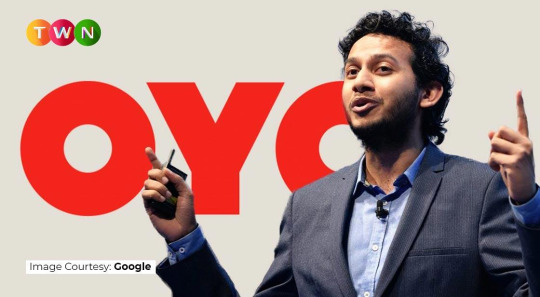
Ritesh Agarwal Early Life and Education
Ritesh Agarwal was born into a business family in Bissam Cuttack, Orissa, and attended Rayagada's Sacred Heart School. For him, growing up in Rayagada, Odisha, was all about having fun and learning, but his methods were far different from those of other children. He had a lot of fun messing around with the computer and looking for opportunities to make mistakes so he could learn new things. As a result, he developed a strong interest in software! Ritesh left for Kota to join IIT in 2009, and it didn't take him long to realize that Kota was anything but a location to learn to code. He used to spend his free time relaxing and traveling. He even started drafting a book titled 'Indian Engineering Colleges: A complete encyclopedia of Top 100 Engineering Colleges,' which he ended up inscribing. This book became quite popular on Flipkart and was quickly sold out.
Success Story of Ritesh Agarwal
Let's uncover the success story of Ritesh Agarwal!
Beginning of His Entrepreneurial Journey
Ritesh Agarwal was a nomad who traveled across the country before founding OYO, and it was during these journeys that he realized the problem with affordable motels. As a result, at the age of 17, he founded Oravel Travels, a company modeled after Airbnb. However, it later became known as OYO rooms. He saw that the issue with affordable hotels was more than just availability, so in May 2013, he established OYO to address additional difficulties.
Ritesh Agarwal Net Worth
Ritesh Agarwal is one of India's richest young men, with a net worth of around $612.1 million (Rs. 4,547 crores).
According to the Hurun report, Ritesh Agarwal's net worth has decreased, and he has lost his billionaire status as a result of COVID-19.
According to Wikipedia, Ritesh earned the title of India's second-youngest billionaire in 2021.
Kevin David Lehmann took the top spot as the world's youngest billionaire, with a net worth of $3.3 billion, according to Forbes' 2021 list.
He was a billionaire withholding $1.1 billion, according to Hurun Rich List 2020.
Launch of OYO
OYO Rooms reached out to prospective hotels, or a hotel owner may reach out to them, and OYO's team would visit the location, audit the hotel to identify the improvements that would be required to standardize the property according to OYO standards and share the information with the hotels. Following the launch, Bhawna Agarwal, the former CEO of e-commerce giant SeventyMM, joined the team to provide crucial business advice. Ritesh was awarded a fund of 30 lakhs from VentureNursery, a startup accelerator that brought together a group of investors to nurture entrepreneurs. OYO Rooms raised 14 crores from DSG Consumer and four crores from LightSpeed Venture later in 2014.
The meaning of OYO is “ON YOUR OWN”
OYO Rooms reached out to prospective hotels, or a hotel owner may reach out to them, and OYO's team would visit the location, audit the hotel, and share the findings with the hotels. Bhawna Agarwal, the former CEO of e-commerce giant SeventyMM, was back in the team to provide business advice. Ritesh was awarded a fund of 30 lakhs from VentureNursery, a startup accelerator that brings together a group of investors to help entrepreneurs grow. OYO Rooms raised 14 million dollars from DSG Consumer and 4 million dollars from Lightspeed Venture later that year.
To Read This Full ARTICLE, Click Here
0 notes
Text
Biography Of Maharaja Krushna Chandra Gajapatis
Goura Chandra Gajapati, the Zamindar of Paralakhemundi, and his wife Radhamani Devi welcomed Krushna Chandra into the world on April 26, 1892.He completed his basic education at the nearby Maharaja High School in Paralakhemundi before continuing his higher study at Newington College in Madras. He lost his father while he was a student at Madras.After completing his study, he went back to Paralakhemundi and wed the princess of the Kharsawan State in 1913. On April 26 of the same year, he succeeded as the new zamindar of his land.
Krushna Chandra Gajapati KCIE, often referred to as Captain Maharaja Sri Sri Sri Krushna Chandra Gajapati Narayana Deba KCIE, was a significant figure and is widely considered as the founder and architect of the independent state of Odisha, which speaks the Odia language. He owned the Delanga estate in the Puri district of Odisha and was a descendant of the Paralakhemundi Estate. His ancestors came from the illustrious Eastern Ganga Dynasty. He served as Orissa's first prime minister. After him, Odisha's current Gajapati District was named.
0 notes
Text
Top 7 BCA college in Bhubhaneswar ?
LIT (Lakshya Institute of Technology) College
Xavier University, Bhubaneswar.
KIIT University
Orissa Engineering College
Utkal University
Institute of Management and Information Technology (IMIT)
Centurion University of Technology and Management
0 notes
Text
Odia Book Gaan Ra Daka
Gaan Ra Daka Written By Bhubaneswar Behera.In the village of Kashibahal, in the former province of Kalahandi, Behera was born into a Brahmin family. His education at Bhawanipatna culminated in a 1935 graduation. He graduated from Ravenshaw College in Cuttack with a degree in science in 1939, and from the Bihar College of Engineering in Patna with a degree in civil engineering in 1943. In the former state of Mysore, Government of Orissa, he worked as an apprentice for the Department of Works and Irrigation. In February 1945, he was hired as an assistant engineer for the Jog Hydropower Project, where his particular task was irrigation for the Kalindi, Darbar.Uma Devi was Bhubaneswar Behera's wife. Professor Yashodhara Mishra, his daughter, and and three sons: one is a medical doctor, another a police officer Binay Behera, and the third a railway officer.
0 notes